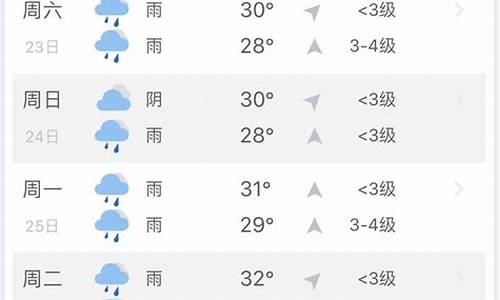28pc预测_Powershell-基本系统设备
在现代IT环境中,Powershell已成为系统管理员和IT专业人员不可或缺的工具。它不仅能够自动化日常任务,还能深入系统设备进行管理和监控。然而,在使用Powershell进行基本系统设备管理时,用户可能会遇到一些常见问题。本文将围绕这些问题展开讨论,并提供相应的解决方案。
1. 设备识别问题
问题描述
在使用Powershell查询或管理系统设备时,用户可能会遇到设备无法识别或识别错误的情况。例如,某些硬件设备在系统中显示为未知设备,或者设备名称与实际不符。
解决方案
更新驱动程序:确保所有硬件设备的驱动程序都是最新的。可以使用Powershell脚本自动检查并更新驱动程序。 powershell Get-WmiObject Win32PnPSignedDriver | Where-Object { $.DeviceName -eq “Unknown Device” } | ForEach-Object { Update-DeviceDriver -DeviceID $_.DeviceID }
检查设备管理器:通过Powershell脚本访问设备管理器,手动检查设备的识别情况。 powershell Get-WmiObject Win32_PnPEntity | Select-Object Name, DeviceID
2. 设备性能监控问题
问题描述
监控系统设备的性能是IT管理的重要部分。然而,使用Powershell进行性能监控时,可能会遇到数据不准确或监控工具不完善的问题。
解决方案
使用性能计数器:Powershell提供了强大的性能计数器功能,可以实时监控设备的性能指标。 powershell Get-Counter -Counter “\Processor(_Total)\% Processor Time”
自定义监控脚本:根据具体需求,编写自定义的Powershell脚本,定期收集和分析设备性能数据。 powershell $cpuUsage = Get-Counter “\Processor(_Total)\% Processor Time” $memoryUsage = Get-Counter “\Memory\Available MBytes” Write-Output “CPU Usage: $($cpuUsage.CounterSamples.CookedValue)%” Write-Output “Memory Available: $($memoryUsage.CounterSamples.CookedValue) MB”
3. 设备配置管理问题
问题描述
在管理多个系统设备时,配置的一致性是一个挑战。手动配置容易出错,且难以跟踪配置变更。
解决方案
使用Powershell DSC:Powershell Desired State Configuration (DSC) 是一种配置管理工具,可以确保系统设备配置的一致性。 powershell Configuration BasicSystemConfig { Node “localhost” { WindowsFeature IIS { Ensure = “Present” Name = “Web-Server” } } } BasicSystemConfig Start-DscConfiguration -Path .\BasicSystemConfig -Wait -Verbose
版本控制配置文件:将设备配置文件纳入版本控制系统,便于跟踪和管理配置变更。
4. 设备故障排除问题
问题描述
设备故障是不可避免的,但如何快速有效地进行故障排除是关键。Powershell可以帮助自动化故障排查过程,但需要正确的方法和工具。
解决方案
日志分析:使用Powershell脚本自动收集和分析系统日志,快速定位故障原因。 powershell Get-EventLog -LogName System -EntryType Error | Select-Object -First 10
自动化故障排查脚本:编写自动化脚本,根据预定义的故障排查流程,逐步检查设备状态。 powershell Function Test-DeviceHealth { Param ( [string]$DeviceID ) $device = Get-WmiObject Win32PnPEntity | Where-Object { $.DeviceID -eq $DeviceID } If ($device.Status -eq “OK”) { Write-Output “Device $DeviceID is healthy.” } Else { Write-Output “Device $DeviceID is not healthy. Status: $($device.Status)” } } Test-DeviceHealth -DeviceID “PCI\VEN_10DE&DEV_1C20&SUBSYS_11861458&REV_A1”
5. 设备安全管理问题
问题描述
设备安全是IT管理的重要组成部分。使用Powershell进行设备管理时,如何确保设备的安全性是一个重要问题。
解决方案
权限管理:使用Powershell脚本管理用户权限,确保只有授权用户可以访问和管理设备。 powershell $acl = Get-Acl “C:\Devices” $permission = “BUILTIN\Administrators”,“FullControl”,“Allow” $accessRule = New-Object System.Security.AccessControl.FileSystemAccessRule $permission $acl.SetAccessRule($accessRule) Set-Acl “C:\Devices” $acl
安全审计:定期使用Powershell脚本进行安全审计,检查设备的安全配置。 powershell Get-WmiObject Win32_SecuritySetting | Select-Object Name, Description, Setting
结论
Powershell在基本系统设备管理中扮演着重要角色,但用户在使用过程中可能会遇到各种问题。通过本文提供的解决方案,用户可以更好地利用Powershell进行设备识别、性能监控、配置管理、故障排除和安全管理,从而提高系统管理的效率和安全性。
声明:本站所有文章资源内容,如无特殊说明或标注,均为采集网络资源。如若本站内容侵犯了原著者的合法权益,可联系本站删除。












